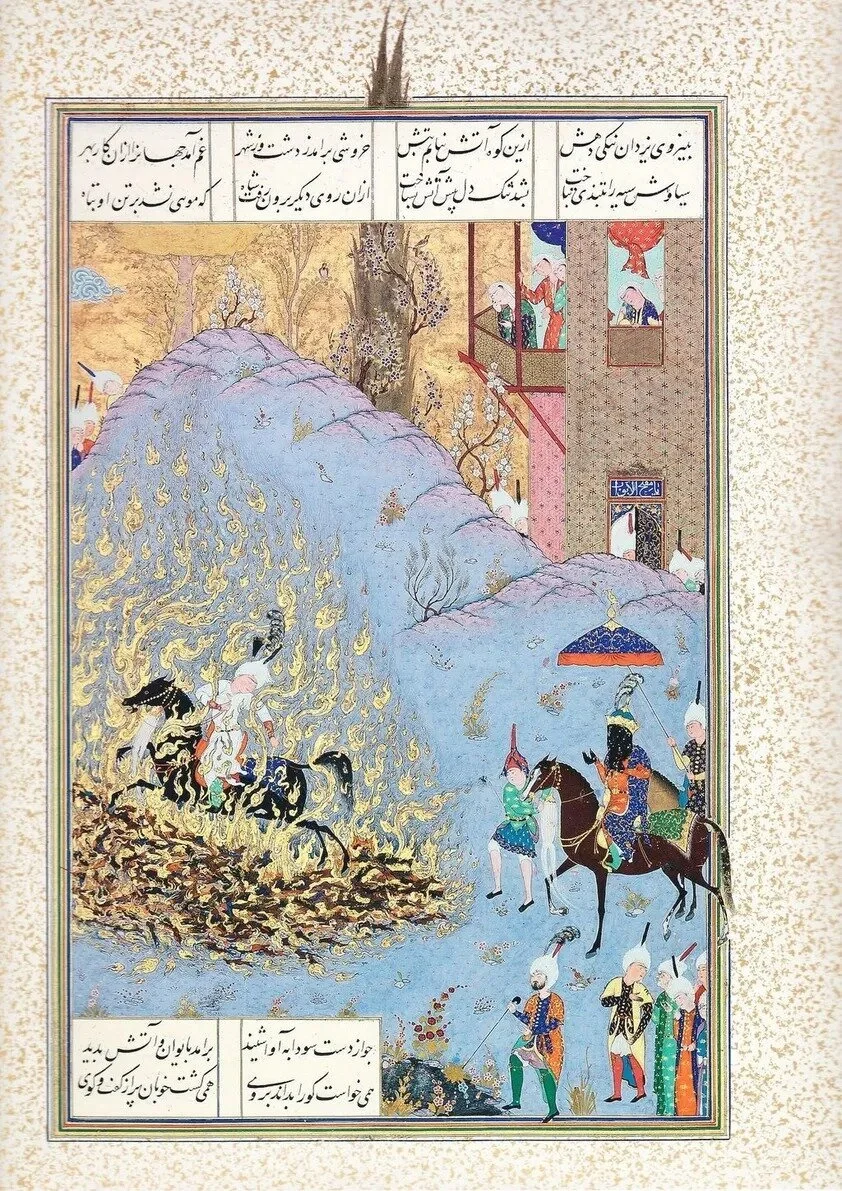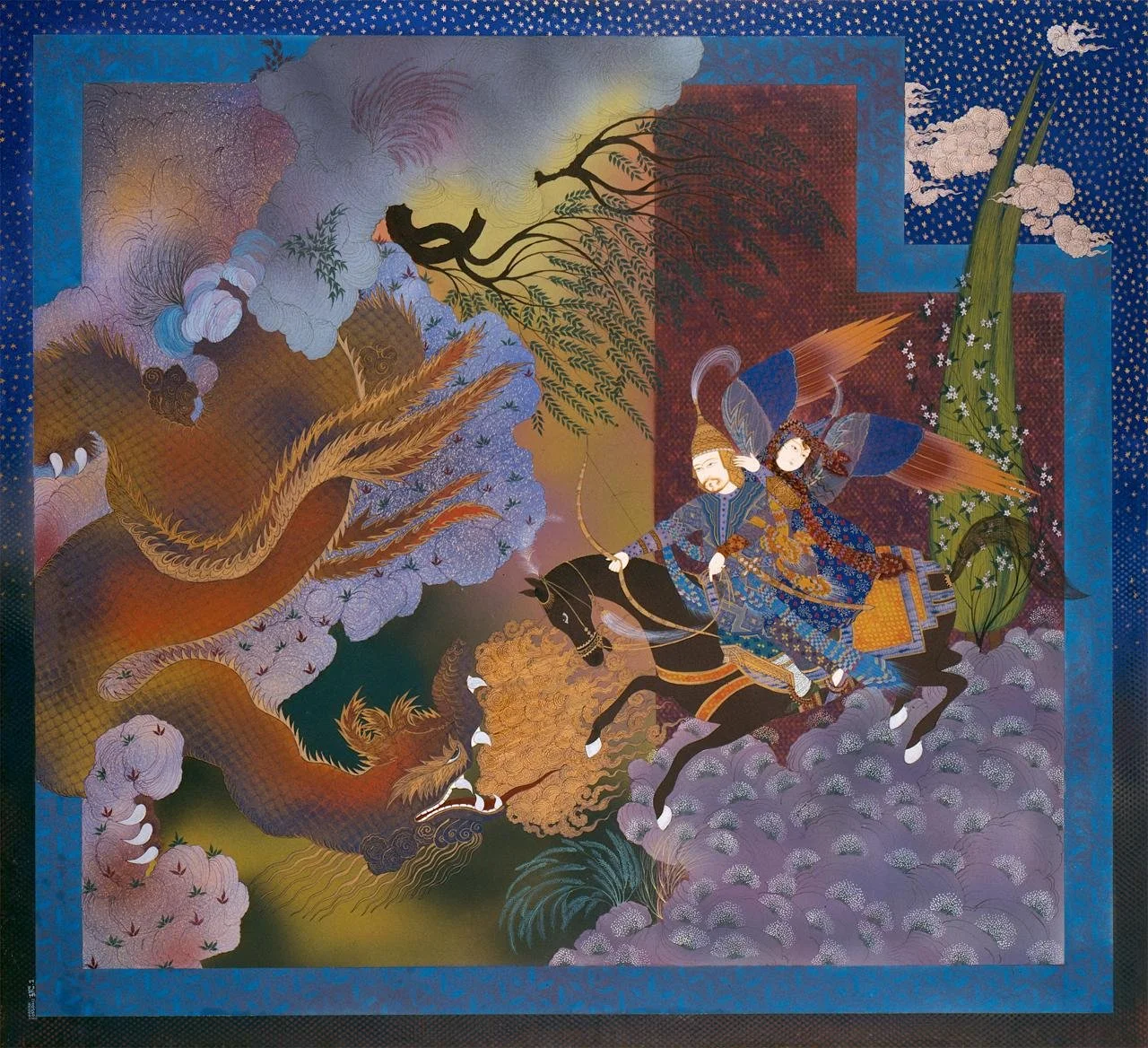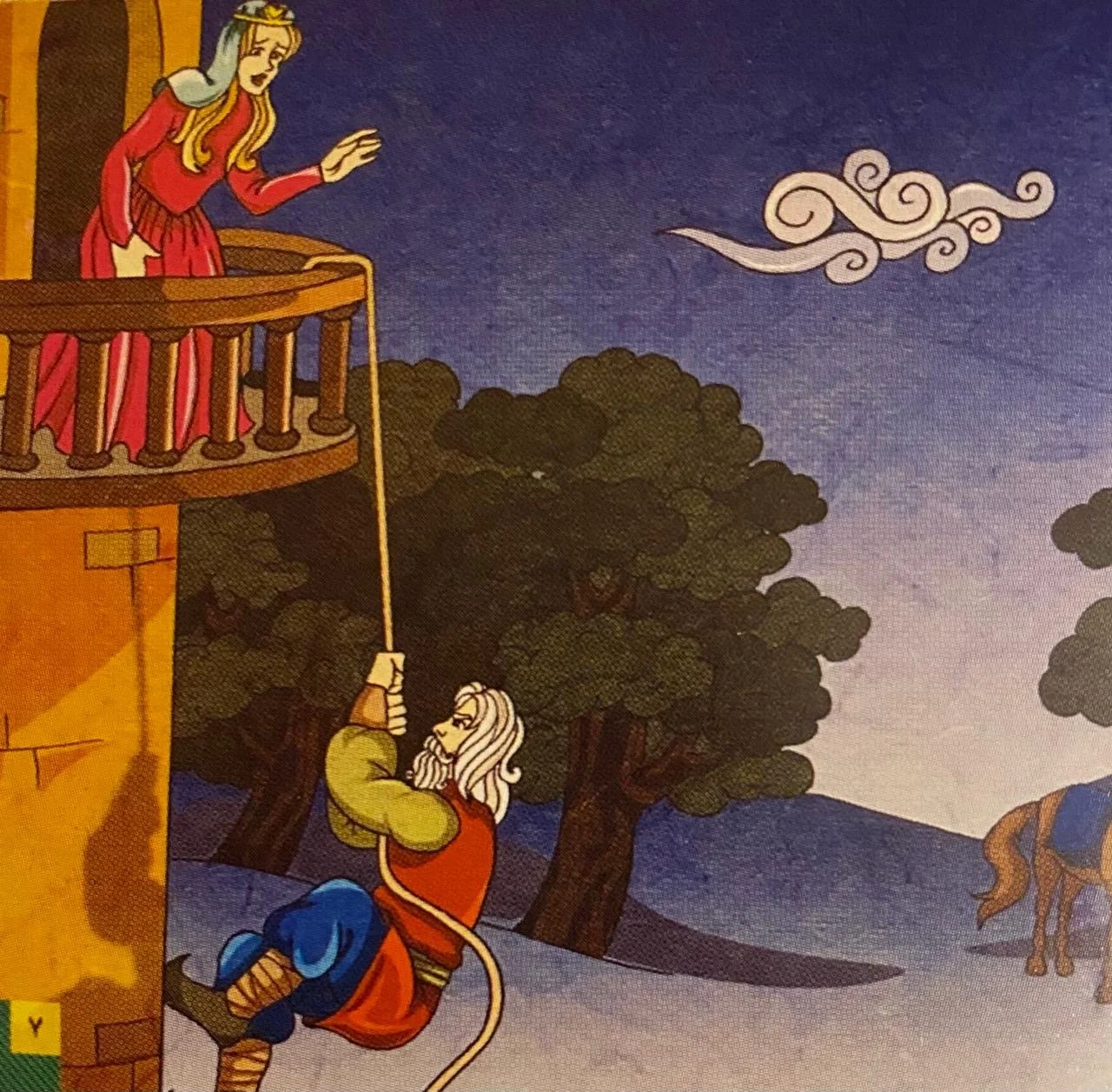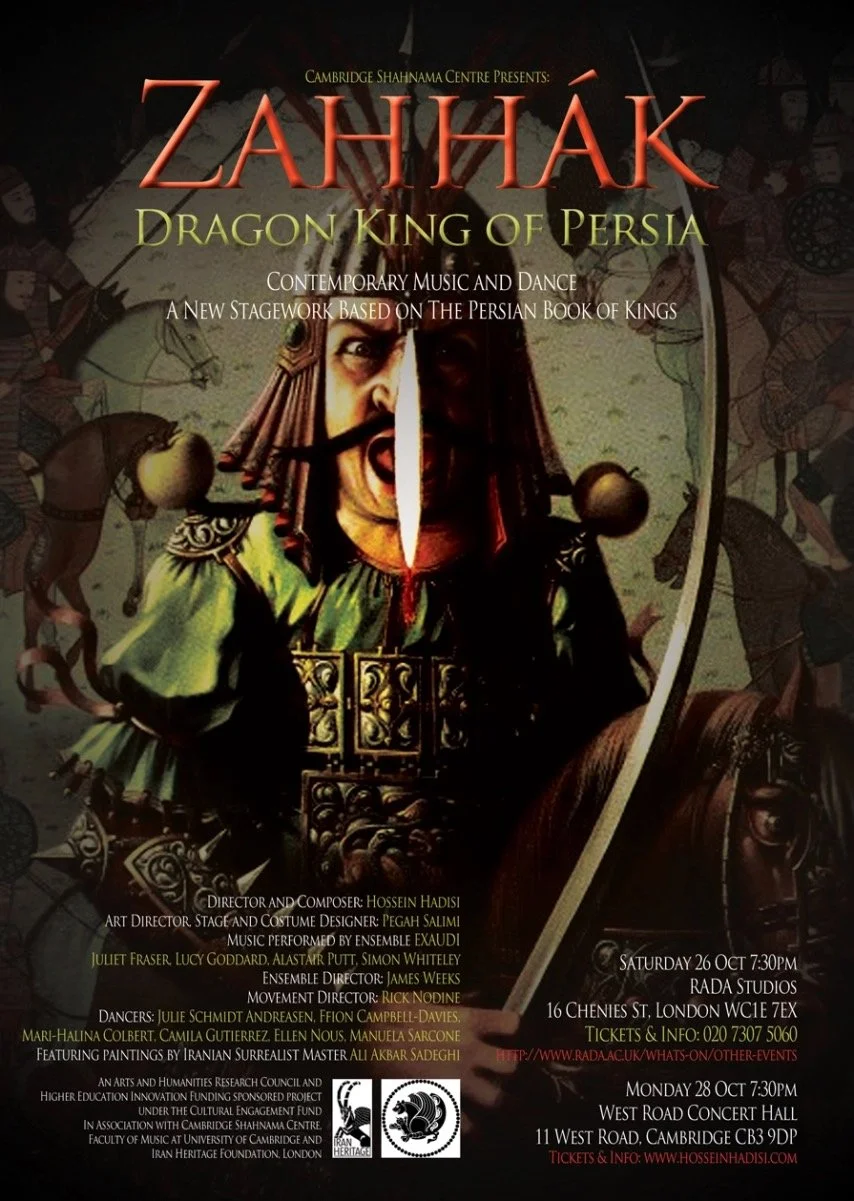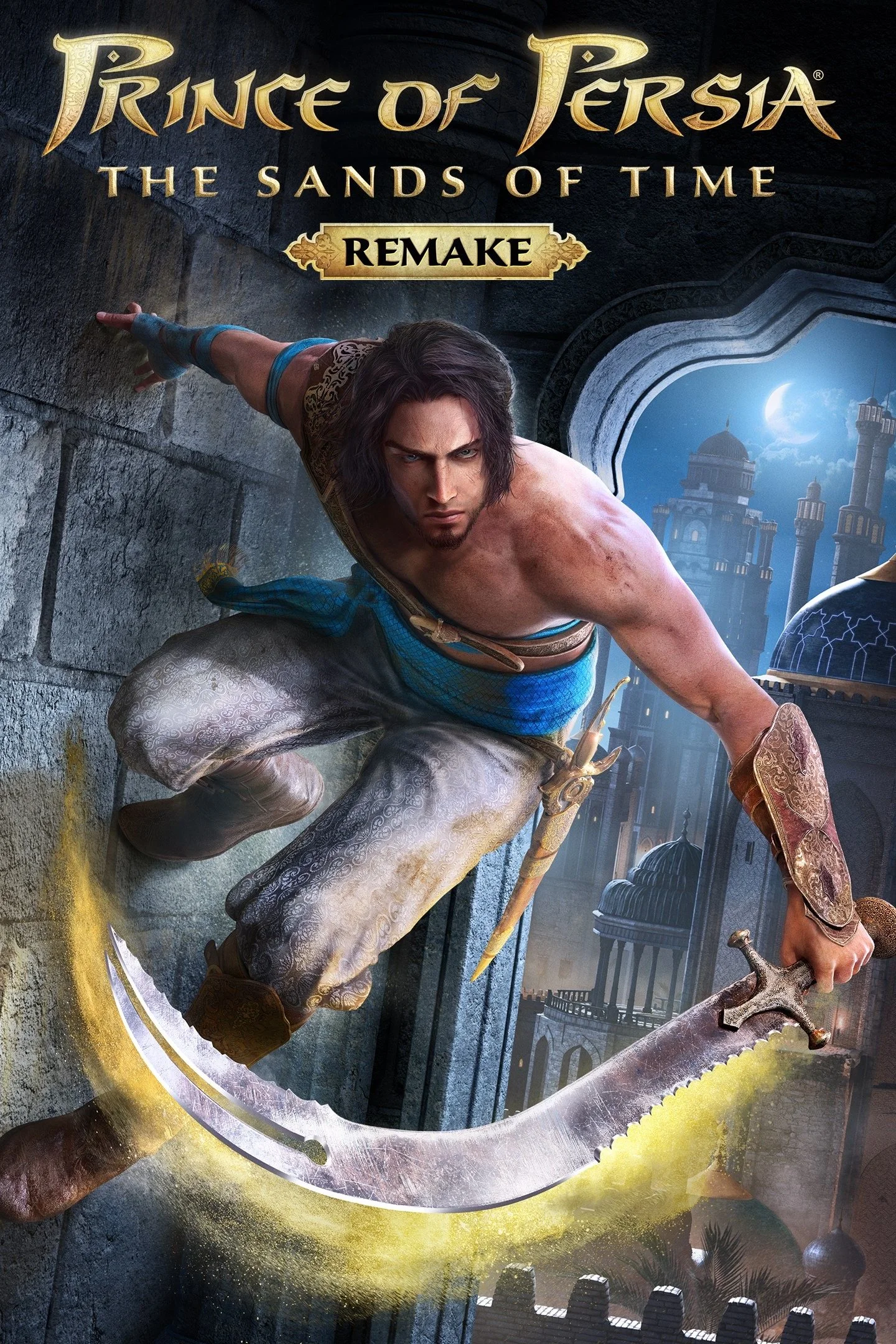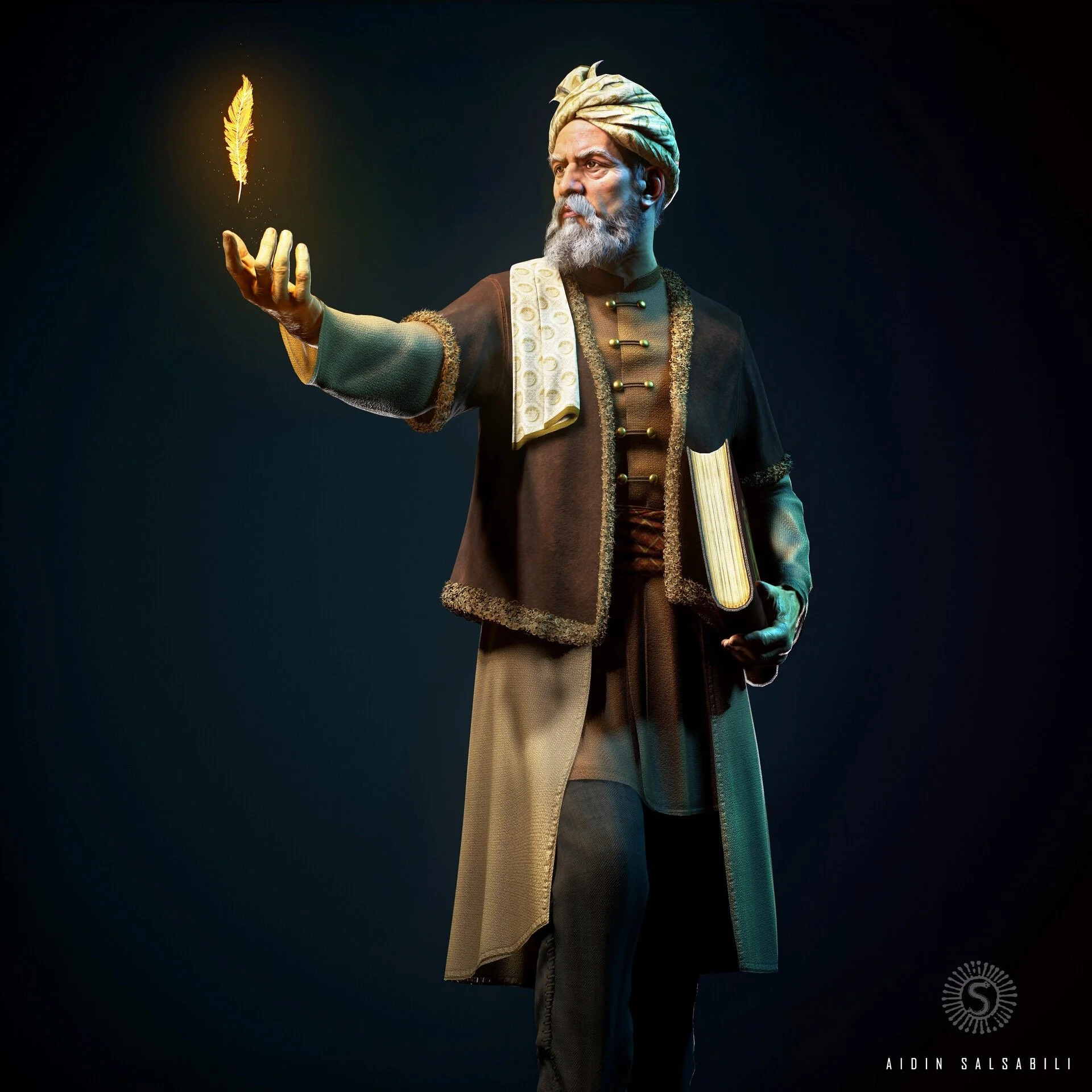





Shahnameh
The Book of Kings
Shahnameh
The Book of Kings
Shhahnameh - The Book of Kings
Almost since its creation in the 10th century by Ferdowsi, a wealthy patriotic landowner in the North-West of modern Iran, this poem has been perceived as a symbol of Iranian national and cultural identity. Being the longest poem ever written by a single author in the whole history of humankind, it contains ancient stories about such universal human phenomena as love and betrayal, death, and the search for the meaning of life.
Several tales in the Shahnameh correlate with many popular stories, native to other cultural traditions: from Ancient Egypt to Europe, and Asia.
The narrative starts from the creation of the world and ends with the Arab invasion in the 7th century. This is why the Shahnameh is often identified as the most comprehensive compendium of Iranian cosmological and anthropological myths, or the Encyclopaedia of Persian culture, or even the Persian Bible.
During more than a millennium of its existence its most popular stories have been used to teach younger generations what is good and what is evil, constantly modernising the ancient legends and their protagonists, making them always alive and contemporary, whenever they have been created - either in the 15th or in the 21st century.
This has been happening less to the text and more to its visual interpretations, which is the secret of the eternal life of the great epic. From the last century illustrating the Shahnameh has been spreading unstoppably throughout all well-known and new media: from traditional book illustration to monumental painting, murals. sculpture, cinema, photography, drama, puppet theatre, symphonic and pop music, opera, ballet, digital art, video games and AI.
About the Platform
This platform aims to introduce modern and contemporary art related to the themes of the Shahnameh in all forms and genres. This is the first attempt of such a kind, which we hope will grow to become a live interactive medium linking artists, professional art critics and all those who love Persian literature, art and culture in modern society. One of the goals of this project is to familiarise wider audiences with the multidimensional interactions inside such a cultural phenomenon as the Shahnameh throughout the ages, and show its place in the world cultural context and human civilisation in general, with the focus on its ancient roots and influence on modern society.
Samaneh Asghari (Sabzevar, 2019) Talking to the leaf
Amir Enayati (Torbat Heydarieh, Zarg village, 2019)
Looking into the future
Siyavush - A Princely Martyr
Siavash Passing Through the Fire, folio 166r from the Shah Tahmasp Shahnama (between 1522-1535, Tabriz), attributed to ʿAbd al-Vahhab, Tehran Museum of Contemporary Art. Reproduced in Shahnama-yi Shah Tahmasp, Tehran Museum of Contemporary Art, 2021, 123/214. Photographed by Mohsen Mohamadkhani for Tehran Museum of Contemporary Art.
For example, only one story in the Shahnameh about Prince Siyavush brings so many layers of cultural diversity and multinational interaction. The name of Siyavush, or Siyah-ash means someone who possesses a black horse, was originally of Sogdian origin. Ancient Sogdiana had its capital around Samarkand, which is now in modern Uzbekistan. In those days this was - as the Greeks called it - Transoxiana, or the Arabs - Ma wara an-nahr - which means the land behind the river, and the river was the Oxus, Amu-Darya. That was the region which was a true melting pot of of various cultures and civilisations, where long before the arrival of Islam the Hellenistic traditions were influenced by Buddism, Zoroastrianism and other local beliefs. In Sogdian culture, which was an artery of the famous Silk Road, Siyavush had the same role as for example Osiris in Ancient Egypt - who personified the idea of eternal nature, dying annually in autumn and reviving in spring.
The proof for this is that in the Shahnameh he is the only character out of hundreds who is executed in the most unique way. As.a result of a treacherous plot he is beheaded - of course there is nothing special about that in those days - but he is the only one who in the medieval manuscripts is depicted during his execution with a gold basin under his neck so that his blood would not touch the ground, and he would never have a chance to resurrect.
In the Shahnameh he is already a protagonist of another legend - when his stepmother Queen Sudabeh unsuccessfully tried to seduce him. This story, which exists in most literary cultures in the world, is about a mature noble lady, or even a goddess who falls in love with a younger man of a lower status. Christians are familiar with it from the Bible - it is the famous legend about Joseph and the wife of Potiphar. Muslims know it from the Qur’an as it is mentioned in Sura 12 Yusuf. In the Islamic tradition the lady already has a name - Zulaykha. In Classical literature we have a myth about Phaedra and Hippolytus in Greece, or Venus and Adonis in Rome. The earliest known version is mentioned in a papyrus from Ancient Egypt, and among the latest - I can mention the novels by Thomas Mann, Marina Tsvetaeva, or the musical by Andrew Lloyd Weber.
This story was even more popular among artists, who have been illustrating these episodes in Persian literature or the Bible - from Behzad to Rembrandt.
There are quite a few such wandering stories in the Shahnameh that are universal for all mankind, linking past and present, East and West. Their modernised visual interpretations that are being created by our contemporaries prove that Shahnameh and its ideas having survived the first millennium will certainly live forever.
Siyavush Stands Accused by Sudaba before Kai Kavus", Folio 163v from the Shahnama (Book of Kings) of Shah Tahmasp, Tabriz, ca. 1530–35, attributed to 'Abd al-Vahhab, Gift of Arthur A. Houghton Jr., 1970, 1970.301.23

Media
The Book of Kings
Media
The Book of Kings

Artists
The Book of Kings
Artists
The Book of Kings
FARAH OSSOULI
Farah Ossouli (b. 1953, Zanjan) is an Iranian painter, based in Tehran. She is known for her modern interpretation of Persian miniature. Often her work draws on issues related to women's life, Persian poetry, and classical western art.
Ossouli graduated in 1971 from the Girls' School of Fine Arts, Tehran. Ossouli graduated in 1977 with a B.A. degree in graphic design from University of Tehran. In 1975, Ossouli married Khosrow Sinai.
Her work is often created in gouache and watercolour and features subjects found in Persian miniature painting set in contemporary themes, subjects may include women, men, grapes, birds, flowers, grapes, among other things. Her work replaced the text often found in traditional miniature painting with blocks of color and the scale of the figures is manipulated.
Her work has been collected in many public art collections including, the Metropolitan Museum of Art. Art Gallery of Western Australia, Tehran Museum of Contemporary Art, Los Angeles County Museum of Art, among others. She has held solo exhibitions in the United States, Europe, Iran, and participated in group exhibition in many other countries

Characters
The Book of Kings
Characters
The Book of Kings

Stories
The Book of Kings
Stories
The Book of Kings
Shahnameh - Curators' Talks
Shahnameh - Curators' Talks



